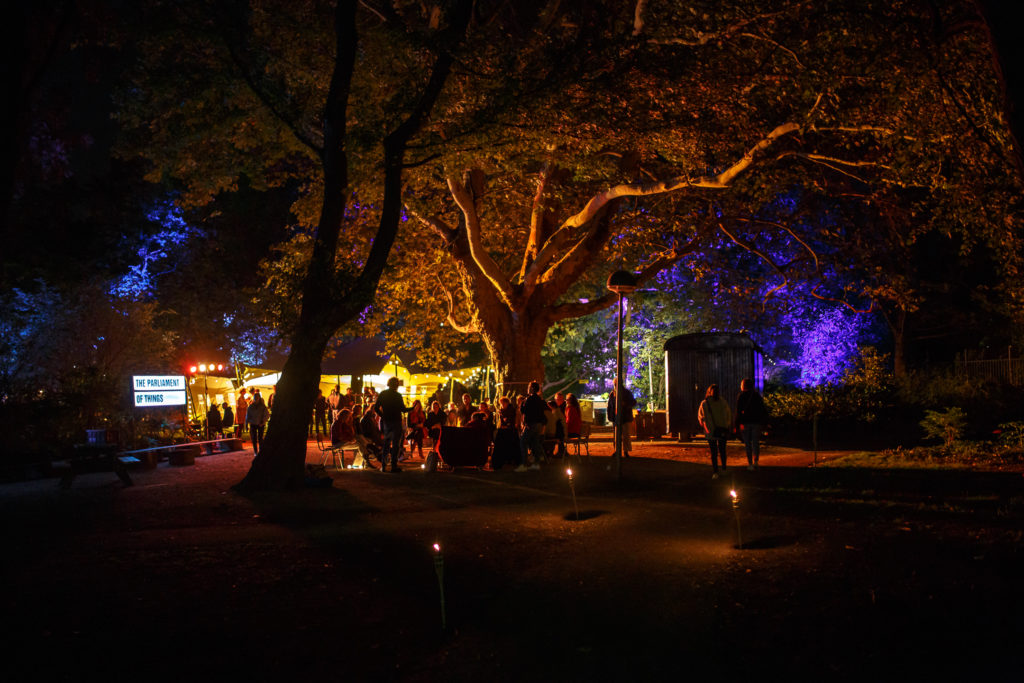The displacement of artists from inner-city neighbourhoods due to rising rents: it has become an all too familiar phenomenon and a clear signal that gentrification is kicking in. Artists and musicians, who have moved into initially unloved or neglected neighbourhoods and with their creative energy turned them into interesting and lively places, are forced to move out when word spreads and ‘their’ neighbourhood becomes a popular destination. Land value increases, rents rise. After a while the creative pioneers become victims of the success they have fuelled themselves. They cannot afford the rents, often not being as primarily commercially minded as the businesses they are replaced by, and thus they are priced out, and have to move further to the periphery. Until the same gentrification cycle is put into motion there and they roam further into the hinterlands.
This has also become a widespread phenomenon in Amsterdam, and has reached areas outside of the inner city such as Amsterdam-Noord and het westelijk havengebied. For example, an announced rent increase for the Tolhuistuin, an old Shell canteen turned creative hub for theatre, visual arts and music in Amsterdam Noord, means that more than half of the cultural institutions and companies located in the cultural complex are likely to move out during the coming months. The rent increase is initiated by the municipal real estate company, who took over the ownership of the Tolhuistuin from the local borough last year. By pushing out these creative enterprises, which often involve the surrounding neighbourhood in their cultural projects, the municipality is shooting itself in the foot. Commercial interest is given precedence over the development of a longer-term vision in which space for cultural initiatives is retained and local parties are involved.

Tolhuistuin by Tim Hillege
Meanwhile, in one of the capitals of gentrification so to speak, measures are being taken to counter the negative effects of gentrification. To prevent the departure of artists and creative firms, London’s mayor, Sadiq Khan, has introduced a new planning measure: “Creative Enterprise Zones”. Six inner-city neighbourhoods have been designated as zones where “creative workers” – defined as people who work in art and fashion and have lower incomes – can take up residence in subsidised living and working spaces. The boroughs are given funding to provide affordable workspaces for artists, small creative businesses and local people. Recognising the economic and cultural significance of small creative businesses, this policy aims to ensure that creative businesses can stay in the inner city and are not pushed further and further to the periphery.
With this in mind, Amsterdam, taking on an increasingly market-driven approach to the city’s development, may soon lag behind in its urban governance regarding gentrification. Just as the ban on tourist shops in the city’s historic centre was put into effect in 2017, when actually the centre was already completely saturated with the fast-food chain stores which this policy aims to fight, the city needs to pay attention if it doesn’t want to lose its special character as laboratory for creative talent. A character that is fundamental both for its international reputation and attractiveness as well as its local liveability and diversity. The question should therefore be asked how Amsterdam can remain, next to a paradise for cultural consumption, a place where arts and culture are produced and there is space for experimentation?
If the city wants to remain a breeding ground for creativity, it should safeguard spaces for artistic production and experimentation to take place. This doesn’t necessarily mean following London’s “Creative Enterprise Zones” initiative, but it does mean looking into the value of creative enterprises. Beyond their economic significance for the city, it means recognising the social and cultural significance of arts organisations, and developing policies that can support creative enterprises, especially those that have developed links with their local community. And preferably before all of them have been pushed out and replaced by fast-food stores.